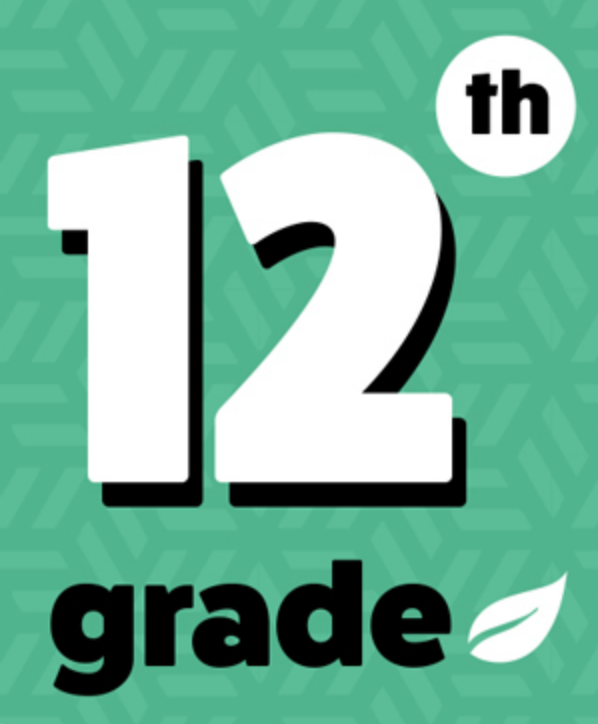Colleges and universities around the nation reported record applications, and record-low acceptance rates, again this year. Many experts believe this new paradigm reflects the ease of using the Common Application.
Acceptance rates in the neighborhood of 6 percent continue to dominate the headlines.
While there’s no getting around the surge in college applications, there are ways for savvy students to improve their admissions odds.
Be A Legacy
While you can’t pick your parents, you may be able to pick your parent’s school. It is not unusual for legacy applicants to be granted admission at rates several times higher than the overall pool.
Harvard Dean of Admissions and Financial Aid, William R. Fitzsimmons, ’67 told The Harvard Crimson that the college’s acceptance rate for legacies has hovered around 30 percent—more than four times the regular admission rate—in recent admissions cycles. Fitzsimmons also said that Harvard’s undergraduate population is comprised of approximately 12 to 13 percent legacies, a group he defined as children of Harvard College alumni and Radcliffe College alumnae. (The figure may be significantly higher had children of Harvard graduate school alumni been included, along with the children of Harvard University employees.) Fitzsimmons told the Crimson that legacy status, in addition to factors such as place of residence, acts as one of many “tips” in the admissions process at Harvard. All other things being substantially equal, he said, legacy status can “tip” an applicant into the group of accepted students.
Harvard is not alone in granting admission to legacy applicants at a more favorable rate. The children of alumni generally make up 10 to 25 percent of the student body at selective institutions. Richard D. Kahlenberg drew attention to the issue of legacy admissions in a book he edited entitled Affirmative Action for the Rich: Legacy Preferences in College Admissions. A study conducted by Princeton’s Thomas Espenshade showed that legacy status added the equivalent of 160 SAT points (on the old 1600 point SAT scale) to a candidate’s test score. William Bowen, of the Andrew W. Mellon Foundation, and colleagues found that, within a given SAT-score range, being a legacy increased an applicant’s chances of admission to a selective institution by nearly 20 percentage points. Based on this formula a student whose other factors placed him in the 40-percent chance of admissions category would have nearly a 60-percent chance if he/she were a legacy.
Be a Recruited Athlete
The same study conducted by Princeton’s Thomas Espenshade showed that other factors being essentially the same, recruited athletes gain an admissions bonus worth 200 SAT points, (on the old 1600 point SAT scale), which would translate to 300 points on today’s 2400 point scale.
Apply Early
If you have decided conclusively on a first-choice college, and your credentials are ready, applying Early Decision can give you a significant advantage in the admissions process. For schools that offer Early Decision, it is not unusual for admission rates to be 2 to 3 times higher for ED applicants than for the regular decision pool. Some schools post these admission stats on their web sites. Sometimes you’ll find this information published in articles in the student newspaper. While some admissions officers have stated that early applicants tend to be better qualified, admission experts generally agree that there is still a meaningful advantage to applying early at most schools.
While your best shot is generally at schools with binding ED programs, you still can often improve your odds by applying Early Action or early in the rolling admissions process.
Demonstrate Interest
High on the priority list at most college admissions offices is “yield”. Yield is the percentage of admitted students who enroll. It is considered a measure of the school’s desirability and is a factor in most of the popular college rankings. Colleges can increase their yield by admitting more students through early decision programs (close to 100% typically enroll) and by extending offers of admission to students who they consider more likely to attend because they have demonstrated high levels of interest.
“Demonstrated Interest” is a relative term and a source of confusion to many applicants. Whereas GPA, standardized test scores and activities are relatively tangible, the meaning and perceived value of “level of interest” differs by institution.
Many schools place a moderate or high value on “level of interest” while other colleges state that it does not factor into their admissions equation. You may find clues about how individual institutions value demonstrated interest on the school’s web site.
There are many ways for students to demonstrate interest without going overboard and making a negative impression or annoying the admissions staff. These include: joining the school’s mailing list; writing strong college-specific supplemental essays that include specific (well researched) features and programs of the institution that appeal to you; visiting the school (make sure you sign in); a productive (carefully crafted, without pestering) email dialog with an admissions officer, coach or professor; an on-campus or alumni interview (even when optional); in-person conversation and follow-up at college fairs and high school visits (remember to leave your name, contact information and resume, if you have one prepared); sending a well-written thank you note (email or hand-written); and applying early.
Don’t be afraid to contact a university if you are looking for additional information not available on the school’s web site. Many universities make a record of personal contact and may use it in their decision-making.
Excel on the SAT & ACT
While most U.S. colleges and universities use a holistic admissions process, standardized test scores are an important factor at the majority of institutions and are considered a measure of the school’s selectivity. Compiled scores (i.e. 25th, 50th, 75th percentile) can often be found on the institution’s admissions web site and in various guidebooks.
What many applicants don’t know is that a large number of institutions “super score” (utilize the applicant’s highest section scores from all testing dates) for evaluative and reporting purposes, giving those who improve their scores by taking the test(s) multiple students a possible advantage. Often the standardized test policy can be found on the admissions web site.
Students interested in attending institutions that “super score” often gain an advantage by taking both the SAT and ACT multiple times. Understanding the score use and reporting requirement for all the schools you are considering is important when evaluating this strategy.
Differentiate Yourself — Your Hook
Most U.S. colleges and universities seek a diverse student body. Geographic diversity is considered important at most institutions which can favor applicants from less represented areas. Background, experiences, talents, and interests are other areas of diversity. Having a desirable “hook” can help you stand out from the competition.
Perfect Your Essays
Plan, carefully draft and ask someone to proofread your personal statements. Make them interesting, appropriate and enjoyable to read! Give concrete examples of things you’ve done to back up your claims. Make sure your essays portray you in a positive manner and allow the readers to get to know you. A compelling essay should leave the reader thinking, “this applicant is likable; he/she would be an asset on campus and a great fit for our school.”
Check Your Application for Accuracy and Consistency
“And that’s why I am interested in studying biomedical engineering at XYZ.” Sounds good? Well, XYZ University doesn’t offer biomedical engineering. Worse yet, the essay was sent to ABC College. Admissions staffers will tell you it is not unusual for applicants to craft and recycle essays without carefully reviewing the contents. Essays that contain incorrect assumptions are not uncommon. Mistakes resulting from poor preparation often lead to rejection.
Proofread Your Application
Often, students are so eager to submit their applications that they don’t take the time to review them carefully. Admissions officers are known to share amusing examples of glaring errors that may indicate a lack of attentiveness, maturity or interest. One student completed the entire application in lower case. Another student wrote that he was “Predator” of the high school newspaper. Keep in mind that spell check programs miss many mistakes!!
Don’t Slack Off During Senior Year
When admissions officers are on the fence about an applicant, senior year performance is known to make a difference. The student pursuing a challenging curriculum with strong grades is likely to be selected over someone less ambitious or accomplished. Keeping up the momentum during your senior year can also land you in the admit pile from the waitlist. Students usually don’t think of the waitlist when they apply for admission, but given a large number of applications and hard-to-predict enrollment, the wait list is a key component of the new paradigm!
Take Interviews Seriously
Many colleges and universities offer admission interviews. They vary by school — “optional”, “on-campus”, “alumni”, “informational”, “evaluative”, “combination informational/evaluative”. (This information is generally available on a school’s web site.) Regardless of how the interview is described, it is at the very least an opportunity to convey your interest and enthusiasm, as well as to make a positive impression. Prepare as if you were applying for a job. Consider what questions you’ll be asked in advance, and come prepared with a list of appropriate questions. Don’t ask for information easily obtained by researching the school. Interviewers usually submit a report that is used for admissions purposes. At many schools, students who interview are admitted at a significantly higher rate. Check the school’s web site in advance for information about scheduling an interview. Some institutions have deadlines that are easy to miss. Scheduling an interview at the last minute may telegraph to the school that it is not your top choice and that you would be less likely to enroll if admitted.
Written by: Lynn Radlauer Lubell, Publisher of InLikeMe.com and Founder of Admission By Design (lynn@admissionbydesign.com), an Educational Consultancy based in Boca Raton, Florida.

Lynn Radlauer Lubell, Publisher of InLikeMe.com and Founder of Admission By Design, an Educational Consultancy based in Boca Raton, Florida.



